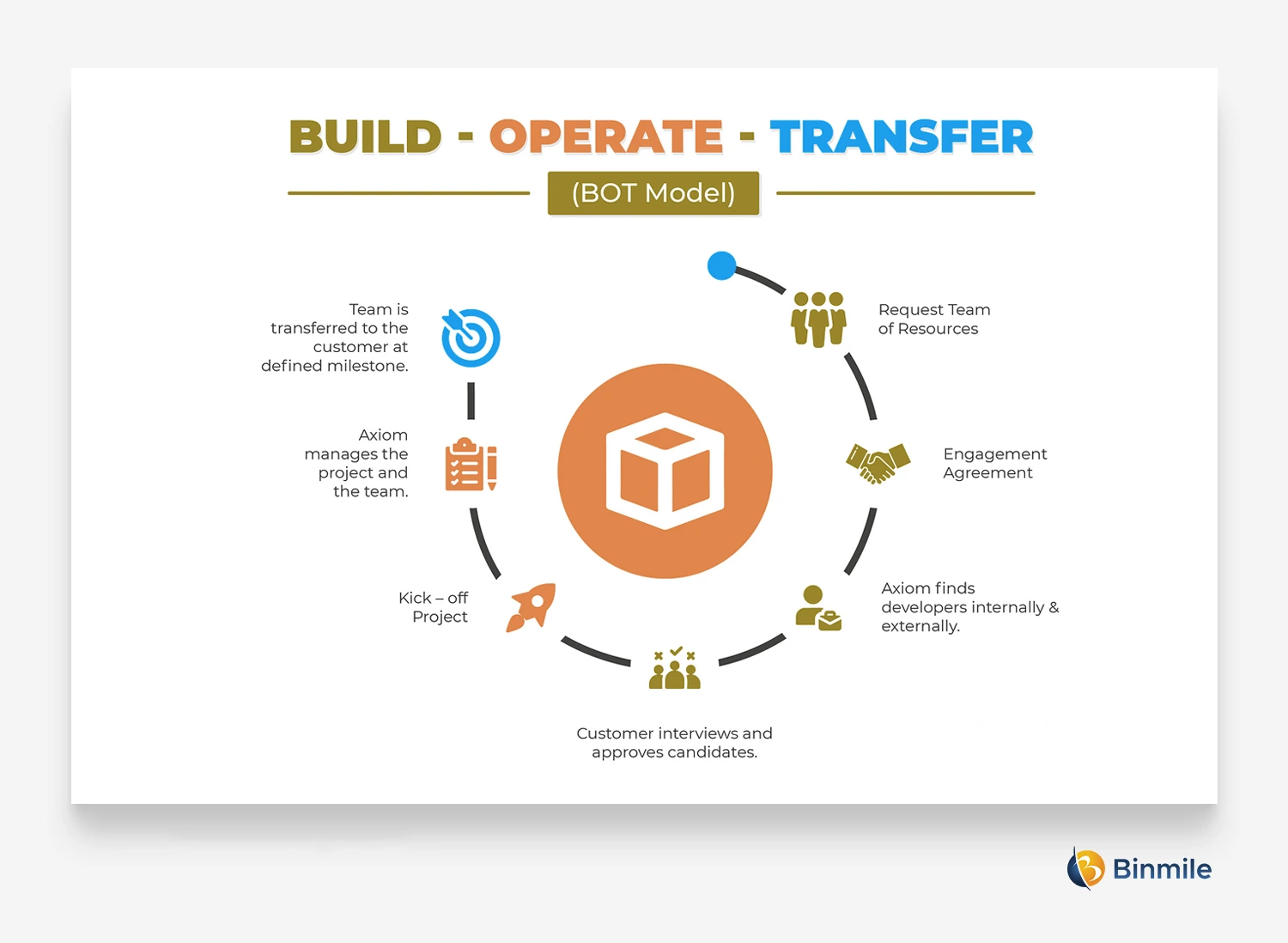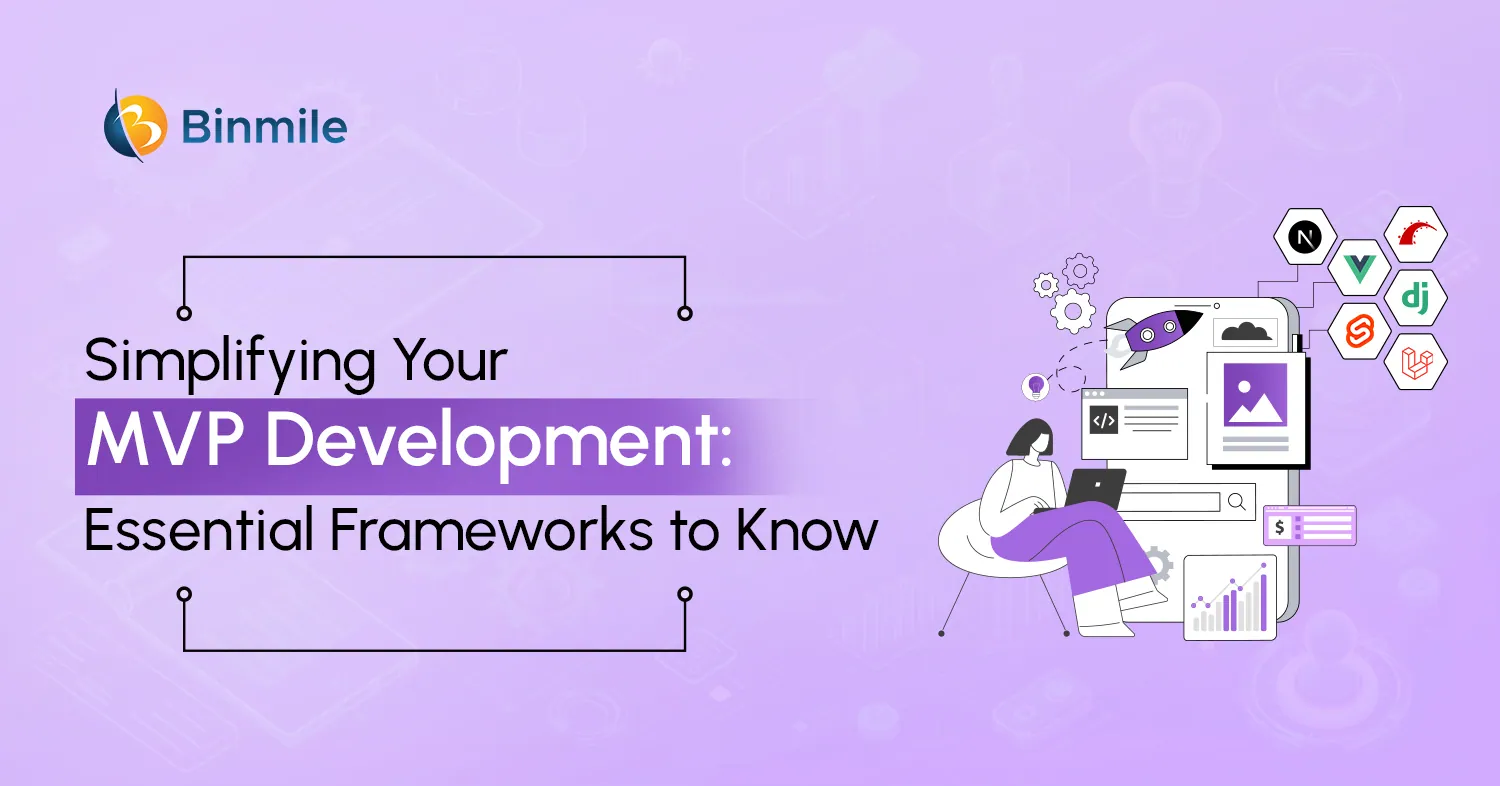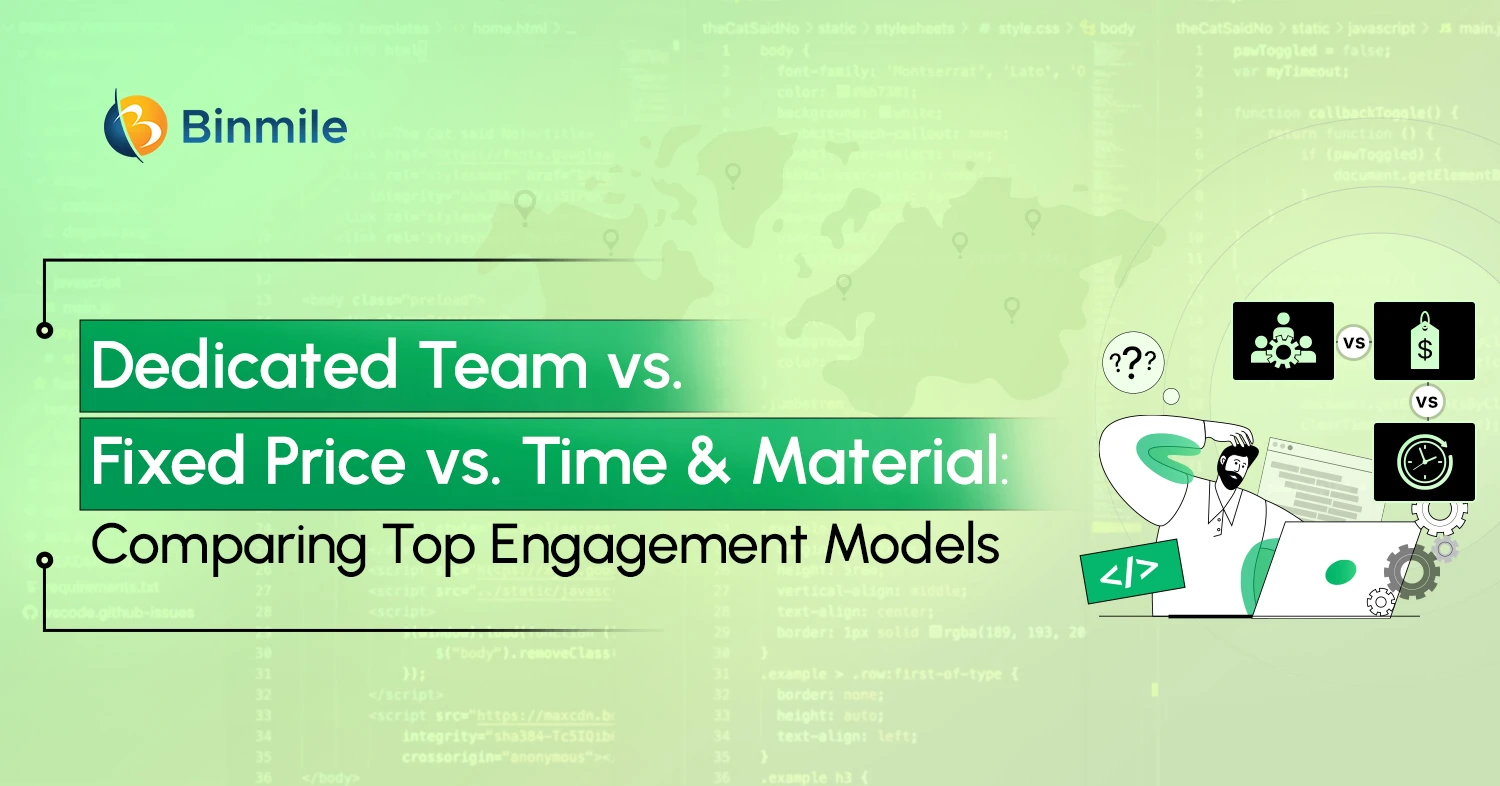- 3 stages of BOT model
- BOT consideration for business
- build operate transfer (BOT)
- build operate transfer it outsourcing
- IT services outsourcing company
- offshore software development
- offshore software development company
- stages of BOT model
- top things in outsourcing IT solutions
- uses of BOT model
- what is BOT in outsourcing
- what is BOT model
- what is build operate transfer
- when you should use build operate transfer model
Businesses that want to enter global markets are rapidly adopting the build-operate-transfer model. The Build-Operate-Transfer model is an integrated partnership. It combines the operations and maintenance duties of the design-build process with the design and development responsibilities. It enables businesses to create an offshore team during the “build” phase and test it out during the “operate” phase. In the “transfer” phase, once the team has adapted to your company’s procedures, resources, and methodology, you can take complete control over the entire process. As a business, you have the option to try before you buy with the Build-Operate-Transfer model. Thus, allowing you to abstain from making significant investments in your offshore unit unless you are confident of the value addition.
Several multinational corporations use the Build-Operate-Transfer approach as a risk-shifting substitute for conventional outsourcing models. Build-Operate-Transfer maintains control by hiring a partner to set up, stabilize, transform, and finally transition new service centers back to the business. It is neither internal nor typically outsourced. This article will briefly discuss the transforming model and how it’s revolutionizing the IT services industry.
How Does the Build-Operate-Transfer Model Help You Stay in Control?
The service delivery industry is constantly changing. Exploring innovative service delivery models that strike a balance between developing internal capabilities and leveraging external expertise may be necessary for multinational enterprises to navigate through disruptive market pressures and fast-evolving enterprise infrastructure needs.
Traditional outsourcing is a well-known factor in cost reduction and service level improvement, allowing a corporation to concentrate on its core operations. Building domestically offers the chance to keep control and internalize the development of service capabilities.
Businesses can seek customized software development company assistance in a Build-Operate-Transfer business model to establish, stabilize, transform, and finally transition back to the delivery center. A company can still access and eventually acquire new service delivery capabilities by utilizing a Build-Operate-Transfer method, which can bring market-leading expertise to a complex service delivery solution. The Build-Operate-Transfer strategy can give ownership to a corporation without giving up return on value or time to maturity, especially in situations where maintaining liquidity and boosting resilience are critical.
What is the Build-Operate-Transfer (BOT) Model?

Before we delve into the specifics, let’s start with the fundamental description so you know what Build-Operate-Transfer is all about.
The build-operate-transfer strategy is one of the latest business engagement models for setting up R&D facilities abroad. Such strategies are typically extended by reputable software outsourcing companies, who will also establish the center in their location.
To be more precise, an IT consulting company offering a Build-Operate-Transfer model will be entirely in charge of hiring developers, handling legal matters, payroll, accounting, and other operational tasks. It’s also important to remember that the R&D office can eventually move into the client’s space once the client has the necessary infrastructure and bandwidth to host them.
Outsourcing is one of the best and most well-known methods for organizations to cut expenses and increase efficiency. To do all of this, vendors provide high-quality services through the Build-Operate-Transfer and alternative interaction modes.
Read More: Software Development Models
What are the 3 stages of the Build-Operate-Transfer Model?
Stage 1: Build
Building the team is the primary goal of this stage. But there’s more to it. The goal is to ensure that the team is prepared to work within locally standardized procedures and utilize its back-office assistance in departments like finance and HR. The terms and parameters of the collaboration are also decided at this point by the Build-Operate-Transfer sides. The organizations carefully assess the needs to identify the abilities and competencies needed for the new workforce.
Depending on the needs of your project, your development company can begin hiring the appropriate team members, team members, office space, and equipment.
More Insights: Build Vs Buy Software Solution
Stage 2: Operate
In this phase, the IT services provider focuses on working with you to manage the offshore crew. Additionally, your partner offers support locally and ensures that the staff is adequately integrated and totally in line with your corporate objectives.
Your application development services provider may engage with the team and ensure that all the crucial procedures are perfectly aligned by devoting an appropriate amount of time to operations. This is also the time to set aside funds for the team’s training, which could consist of seminars followed by one-on-one consultations with each team member.
Stage 3: Transfer
This is the phase where ownership is transferred. The team, complete with all of the knowledge and abilities earned during the operations stage, is transferred to you whenever you’re ready by the services provider.
Within the allotted period, you get to integrate every resource into your organizational structure. The transfer should ideally adhere to a process that was already laid out in the initial collaboration agreement.
Also Read: Offshore Software Development Guide
Why Consider the Build-Operate-Transfer Model for Your Business?
Build-Operate-Transfer ensures an improved service delivery model is now used by your organization. Build-Operate-Transfer is the perfect solution for you in case your company lacks the resources to set up a captive center but still wishes to have complete control over the teams and development processes. On the other hand, businesses aspiring to improve their current offshore operations but lack the resources can also move towards the Build-Operate-Transfer model to save millions from their overall company budget.
The Build-Operate-Transfer business model is a hybrid choice that enables you to gain critical business skills and extends the benefits of outsourcing without giving up control, time, or resources to develop independently. Below are some of the primary benefits of shifting towards a Build-Operate-Transfer model for your business.
Complete Business Transformation
A Build-Operate-Transfer model helps you obtain local knowledge from a service provider to assist you in overcoming cultural or governmental barriers in a foreign country before you extend your services across borders. Additionally, it allows you to get access to reputable vendors with a well-established hiring process that is known for attracting and keeping top talent in a given area.
The Build-Operate-Transfer Model allows you to use playbooks based on years of similar experiences to kick-start transition plans and improve certain procedures.
Full Control of Delivery Centers
Finding the ideal middle ground between internal and external service delivery that supports business goals is the key to a successful sourcing strategy. Build-Operate-Transfer allows you to maintain operational, legal, and security oversight while taking advantage of the innovation and intellectual property a local partner has helped you to create. Additionally, this model allows you to cultivate a culture that is more in line with the corporate and current talent while maintaining the perception of in-house through personalization and branding.
Reduce risk, cost, and uncertainty of development
The Build-Operate-Transfer model allows investors to diversify their investments, which lowers the risks associated with investing in a foreign country while legally ensuring the advantages of transformation. Businesses can reduce the initial expenditure, amortize costs over the business’s early years, and free up money for other important projects. Moreover, a Build-Operate-Transfer model can help your team to scale operations more quickly within a contractually agreed-upon time frame, enabling you to reach ambitious time-to-maturity and cost-of-transformation goals.
Also Read: AI Risks in Business
When should you use the build-operate-transfer model?
Build-Operate-Transfer is useful in a variety of situations when software development is outsourced, including:
In case you are planning to swiftly establish a facility with up to 100 employees in a foreign country without any prior expertise or awareness of that region, your administrative costs can be high. Build-Operate-Transfer handles all of that in addition to any legal or integration issues.
Build-Operate-Transfer is also a wise decision if you’re seeking to launch a subsidiary as opposed to an outsourcing office. By employing this methodology, you can safeguard the culture and values of your business while maintaining total control over the process and talent management keeping the core competencies intact.
Dive Deeper: Outsource Software Development Metrics
We can assist you in making a Shift Toward the Build-Operate-Transfer model
The Build-Operate-Transfer model aids businesses in maximizing the value of their outsourcing partners. The right strategy maintains business operations and knowledge internally, as though they were a part of the same business. Get in touch with the top software development companies today!
Our highly effective and flexible offshoring models assist you in assembling the perfect team of the best talent. In the “build” phase of a Build-Operate-Transfer project, we allow our clients to put up an offshore crew and then give them a test run in the “operate” phase. You can choose to assume complete control of the team in the “transfer” phase if you’ve determined that the team has successfully transitioned to your company’s procedures, methodologies, and tools. With this approach, you have the option of trying before you buy, so you are not obligated to make a significant financial commitment to your offshore property unless you are certain of its worth.
Frequently Asked Questions
Build Operate Transfer (BOT) services refer to a business model where a company partners with an external service provider to build and operate a specific project or business unit. After a predetermined period, ownership and operations are transferred back to the client.
A Build-Operate-Transfer Consultant guides using his expertise to facilitate the implementation of a BOT model. These consultants provide insights, strategies, and support throughout the entire process of building, operating, and transferring a business unit.
Companies looking to expand globally, reduce setup risks, and gain a dedicated offshore team without immediate ownership commitments can benefit from Build-Operate-Transfer services.
Unlike traditional outsourcing, where companies rely on third-party providers indefinitely, the BOT model allows businesses to eventually own and manage the outsourced operations, ensuring greater control and flexibility.









